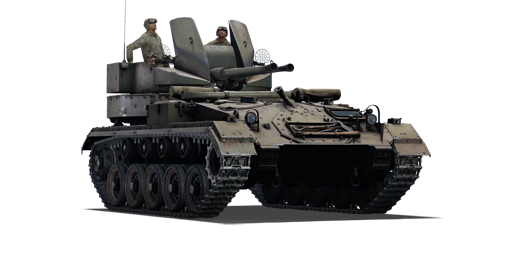



The M19 Multiple Gun Motor Carriage (MGMC) is a self-propelled anti-aircraft gun mounted on the M24 light tank chassis used by the U.S. Army during World War II. It was armed with two 40 mm M2A1 Bofors autocannons. It was manufactured near the end of 1944 by Cadillac and Massey Ferguson of Canada. Although the vehicles were built during World War II, they did not become operational until the war was over. They saw their first combat in the Korean War against North Korean forces in 1950. The M19A1 MGMC is an improved design, rather than a separate variant, that includes an auxiliary engine and generator to power the main armament when the main engine is shut down, as well as fixtures for carrying two spare cannon barrels.
Introduced in Update 1.45 "Steel Generals", the M19 MGMC is a versatile vehicle. The 40 mm M2A1 Bofors autocannons can penetrate some lightly armoured vehicles and have enough destructive capability to bring down aircraft. There are two types of ammunition belts: armour-piercing and high-explosive. It can be employed for flanking maneuvers early in the conflict, given its exceptional mobility. It is crucial to remember, though, that the majority of crews are completely exposed, with ammunition placed all around the turret.
| Belt | Belt filling | Armor penetration (mm) at a distance: | |||||
|---|---|---|---|---|---|---|---|
| 10 m | 100 m | 500 m | 1000 m | 1500 m | 2000 m | ||
| AP-T/FI-T | 72 | 69 | 58 | 46 | 37 | 29 | |
| FI-T | 9 | 8 | 7 | 6 | 5 | 4 | |
| AP-T | 72 | 69 | 58 | 46 | 37 | 29 | |












Mobility | |
|---|---|
Protection |
|---|
Firepower | |
|---|---|